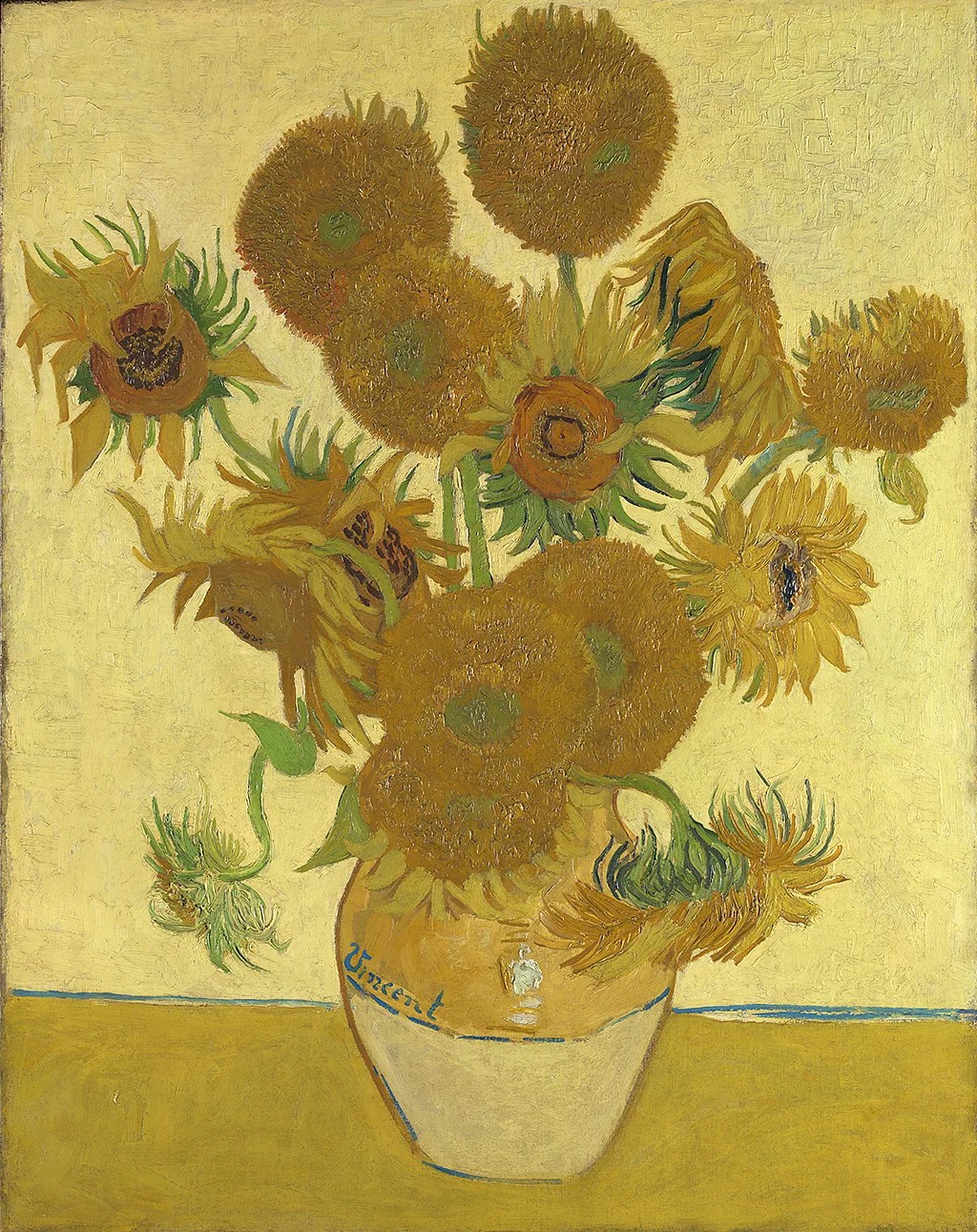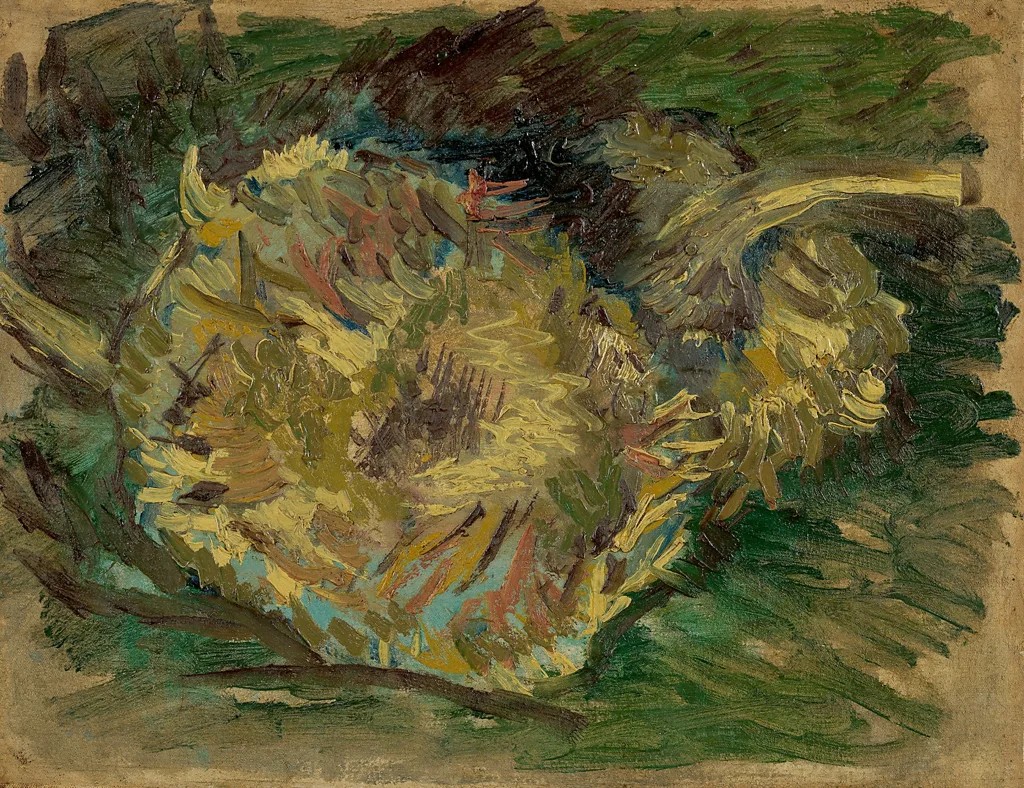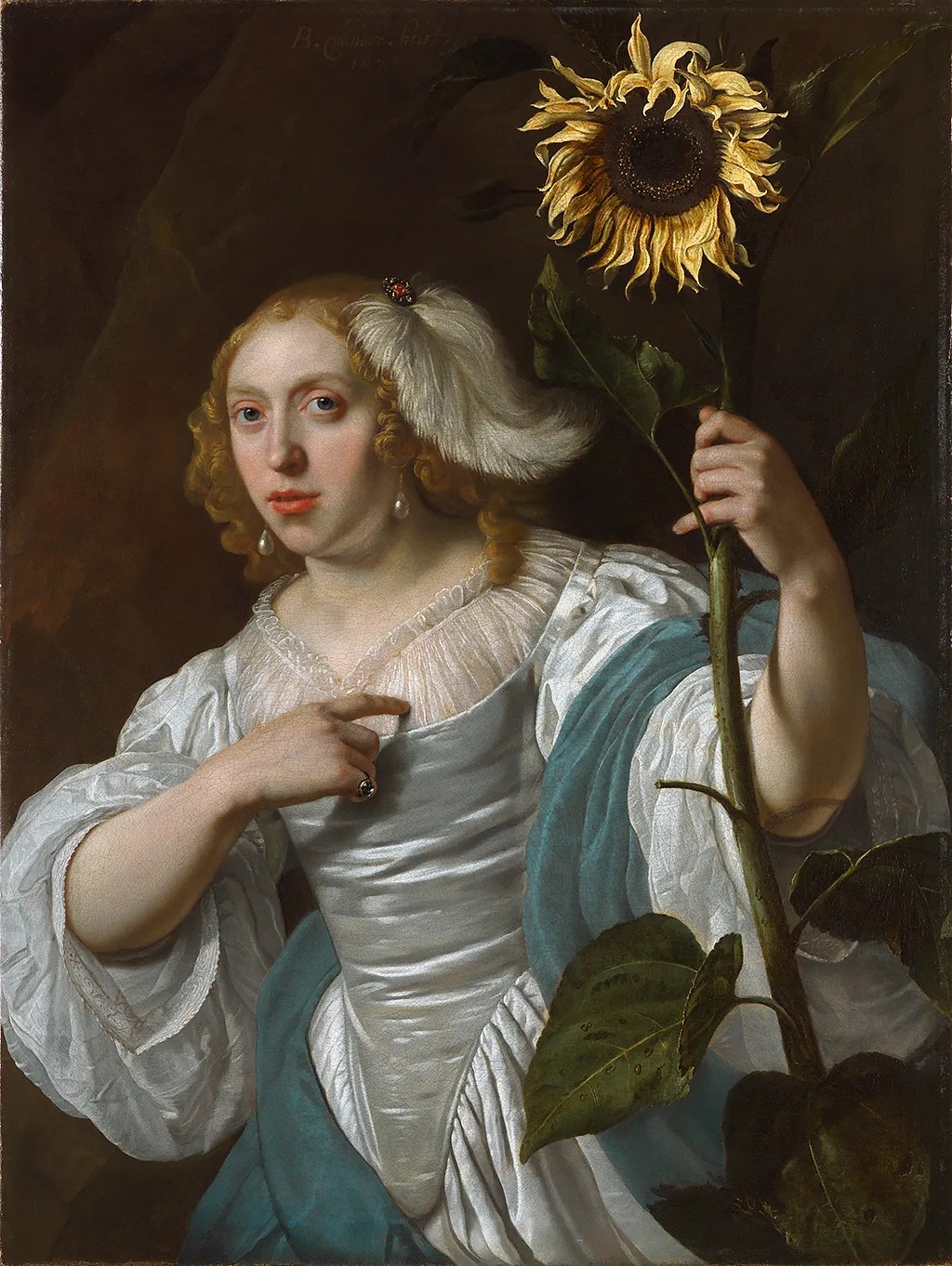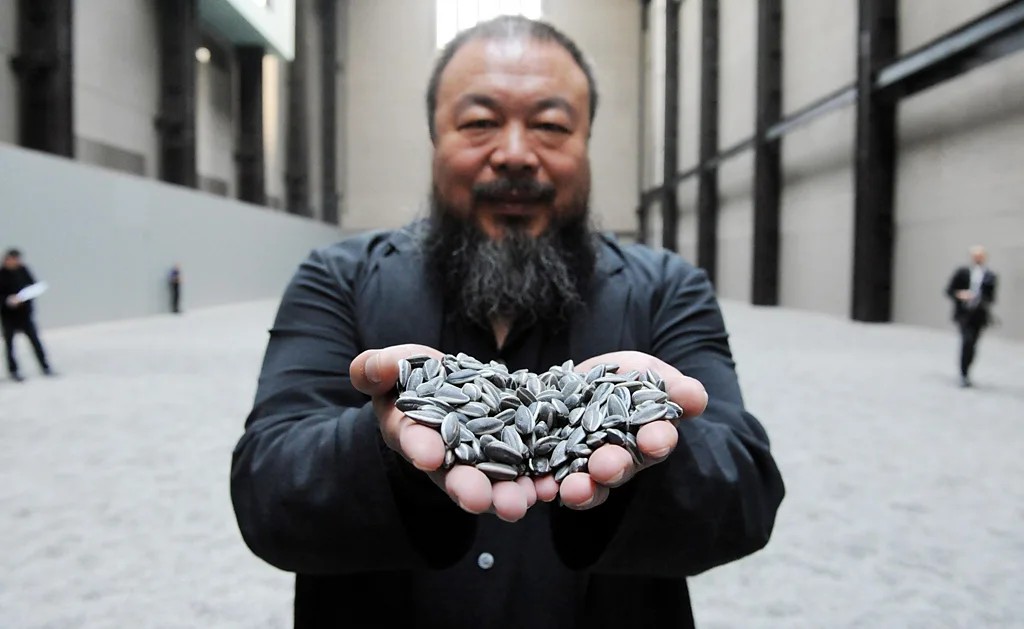The cryptic symbolism of Van Gogh’s ‘Sunflowers’ — and what they really mean
The cryptic symbolism of Van Gogh’s ‘Sunflowers’ — and what they really mean

Why did sunflowers captivate Vincent van Gogh – and what did they really mean to him?
When people think of Vincent van Gogh, it’s often his radiant Sunflowers that first come to mind — bold, bright and instantly recognisable. This wasn’t accidental. “The sunflower is mine,” the Dutch painter once declared, signalling his desire to be seen as inseparable from this flamboyant flower, reports BBC.
Indeed, Van Gogh painted 11 sunflower-themed works over two years, from 1887 to 1889. But behind the fiery yellows and thick brushstrokes lies a deeper question: what did these flowers truly symbolise for him?
His first set of sunflower paintings came in 1887, while living in Paris. A year later, in Arles, he produced his most famous versions — a burst of colour and energy that reflected both joy and confidence. He described painting them with “the gusto of a Marseillaise eating bouillabaisse.” In 1889, he returned to the theme again, recreating three earlier pieces.

Today, Sunflowers is one of the most recognisable images in Western art, housed in the National Gallery, London. Yet, Van Gogh never explicitly revealed what the flowers meant in his letters, leaving art historians and admirers to search for meaning in the swirls and hues.
Some see them as symbols of friendship and hope — the Arles paintings were created to decorate the room of Paul Gauguin, with whom Van Gogh dreamed of forming an artists’ collective. Others detect something more fragile beneath the surface: a reminder of beauty that wilts, joy that fades.
A simple flower, perhaps. But for Van Gogh, sunflowers became a signature — and a lasting symbol of light, longing, and the mysteries he never put into words.
On one level, Van Gogh’s Sunflowers served as a study in colour — particularly his bold experiments with different shades of yellow. But they were more than just an exercise in technique. The paintings were also meant to decorate a home in Arles, where Van Gogh hoped to live and work alongside fellow artist Paul Gauguin. Gauguin had admired the earlier sunflower works, and these paintings seem to reflect Van Gogh’s deep longing for companionship and artistic camaraderie.
That hope, however, was short-lived. Gauguin left after only two months, and Van Gogh’s dream of building an artist collective never materialised. He died at just 37, having sold only a handful of works and receiving little recognition during his lifetime.
Yet in the decades that followed, Sunflowers took on a life of their own. In the early 20th century, they gained cult status among Europe’s artistic avant-garde. British writer Katherine Mansfield wrote in 1920 that the “yellow flowers, brimming with sun, in a pot” had sparked her creative awakening. Just a few years later, critic Roger Fry hailed the paintings as a symbol of Van Gogh’s “supreme exuberance, vitality, and vehemence of attack.”

From obscure canvases to cultural icons, Sunflowers helped cement Van Gogh’s legacy as one of history’s most influential artists — a status he never lived to see.
Van Gogh’s enduring legacy continues to inspire artists well into the 21st century — a connection now explored in the Royal Academy’s latest exhibition, Kiefer / Van Gogh. The show traces Van Gogh’s influence on contemporary German artist Anselm Kiefer, with sunflowers once again taking centre stage.
At the heart of the exhibition is Danaë, a striking new sculpture by Kiefer that shows a sunflower emerging from a pile of books — a powerful image that speaks to knowledge, memory, and regeneration. Nearby, a haunting woodcut features a sunflower sprouting from the chest of a reclining human figure. Both works highlight Kiefer’s long-standing fascination with the symbol, echoing Van Gogh’s own meditations on life, decay, and rebirth.
“For Van Gogh, the sunflower embodies his idea of the South,” curator Julien Domercq told the BBC, referencing the artist’s move from Paris to Provence. But Van Gogh’s approach was more than personal. Having worked as an art dealer, he was deeply versed in the European artistic tradition — and it shows.
“He depicts them in a great Dutch tradition,” Domercq explains. “Flowers wilting and dying… some still lifted to the sun, others slowly fading. It becomes a meditation on the passage of time.”
Kiefer, he says, follows a similar path — drawing on the sunflower as a symbol of vitality, transience, and the eternal pull of light. “A southern flower,” Domercq calls it. “One that looks up at the firmament.”
The sunflower’s symbolism — a story rooted in history
Long before Van Gogh made them famous, sunflowers had already stirred the imagination of artists, writers, and thinkers across centuries. Their symbolism — like all artistic icons — evolved alongside shifts in cultural meaning and human curiosity. From Renaissance painters to Romantic poets, many have been drawn to this radiant flower, including Sir Anthony van Dyck, Maria van Oosterwyck, William Blake, Oscar Wilde, Dorothea Tanning, Paul Nash, and Allen Ginsberg.
Compared to many ancient symbols in art, the sunflower is a relatively recent arrival. Native to the Americas, the flower only made its way to Europe in the 16th century, following the voyages of Christopher Columbus and the wave of European colonisation. Once introduced, its unique heliotropic behaviour — where young blooms turn their heads to follow the sun — captured scientific attention and artistic fascination alike.
That very motion became central to its symbolism. In 1568, Italian botanist Giacomo Antonio Cortuso linked the sunflower to the myth of Clytie — a water nymph who, hopelessly in love with Apollo, the sun god, watched him traverse the sky until she transformed into a flower rooted to the ground, ever gazing upward.
This myth gave the sunflower its romantic associations — most notably, that of unwavering devotion. In Maria van Oosterwyck’s Flowers in an Ornamental Vase (1670–75), a sunflower and carnation seem to exchange a quiet, adoring glance, with a sculpture reminiscent of Clytie or Venus placed subtly in the background. Similarly, in Bartholomeus van der Helst’s Young Woman Holding a Sunflower (1670), the flower is believed to symbolise love and marriage — a blooming emblem of attachment.

From mythology to modern art, the sunflower has stood not just as a symbol of light, but of longing — a theme Van Gogh would later take to expressive extremes.
Beyond romance and mythology, the sunflower also took on spiritual meaning in religious art. In Anthony van Dyck’s Rest on the Flight into Egypt (1632), a single sunflower hovers above the Virgin Mary — not just as a visual flourish, but as a symbol of divine devotion. Its upward gaze reflected Mary’s role as an intercessor between heaven and earth, casting the flower as a marker of religious faithfulness.
By the mid-17th century, the sunflower’s symbolic reach had grown further still. Dutch poet and playwright Joost van den Vondel, writing in 1654, proposed that the flower embodied the very spirit of art. Just as young sunflowers instinctively turn toward the sun, he argued, so too does painting — “kindled by a sacred fire” — turn toward nature’s beauty.
That idea finds visual form in Van Dyck’s Self-Portrait with a Sunflower (1633), where the artist gestures toward the flower and himself, drawing a quiet parallel. The sunflower, ever-watchful of light, becomes a metaphor for the artist — drawn not by duty, but by devotion.
Yet not all sunflower symbolism is romantic or spiritual — some carry distinct political weight. Art historians have long suggested that in Self-Portrait with a Sunflower (1633), Anthony van Dyck wasn’t simply likening himself to an artist drawn to beauty. The painting, they argue, subtly alludes to his loyalty to King Charles I of England, under whom he served as “Principal Painter”. The sunflower, in this context, becomes a symbol of the artist’s allegiance to royal power.
Centuries later, that same symbolism would take on new meaning — and sharper edges — in the hands of contemporary Chinese artist Ai Weiwei. His monumental 2010 installation Sunflower Seeds, made up of 100 million hand-painted porcelain seeds, drew inspiration from propaganda posters of Chairman Mao. In those images, Mao appears like a rising sun, beaming down on masses of sunflowers — a metaphor for the people’s unquestioning devotion.

By repurposing this imagery, Ai Weiwei reclaims and critiques it. His Sunflower Seeds offers a powerful commentary on conformity, control, and individual identity under authoritarian rule — proving that the sunflower, once a simple motif of love or light, still holds a mirror to power.
How sunflowers mirror the human condition
Across centuries and styles, one idea has remained constant in the symbolism of sunflowers: faithfulness. Whether in love, religion, politics, or art, this flower has come to represent a kind of steadfast devotion. It’s likely that Van Gogh, with his knowledge of art history and his own complex emotional world, understood at least some of these associations.
In a letter to his sister, he once described his sunflower paintings as “almost a cry of anguish while symbolising gratitude in the rustic sunflower.” The anguish may have reflected his struggles — with mental health, with rejection, with loneliness. The gratitude, perhaps, was for artists like Paul Gauguin or for the very act of painting itself. His faithfulness, like the sunflower’s to the sun, might have been to art, to beauty, or even to a lost sense of spiritual purpose.
This emotional and symbolic depth continues in the work of Anselm Kiefer, a contemporary artist deeply influenced by Van Gogh. “The sunflower is connected with the stars,” Kiefer has said. “It moves its head against the sun… The moment they explode they are yellow and fantastic — that’s already the declining point. So, sunflowers are the symbol of our condition d’être — our condition of being.”
In his haunting woodcut Hortus Conclusus (2007–14), Kiefer’s sunflowers appear blackened, brittle, and near death — yet always shedding seeds, hinting at the potential for renewal. Where Van Gogh’s flowers blaze with colour and intensity, Kiefer’s speak of endings, and also beginnings.
Together, their works suggest that sunflowers — so often overlooked as mere decoration — may in fact be one of the most human of symbols: always turning toward light, even in the face of darkness.
Rooted in Earth, reaching for the stars
Anselm Kiefer’s fascination with sunflowers doesn’t begin with Van Gogh alone. He has also drawn inspiration from a lesser-known 17th-century figure — Robert Fludd, a physician, occult philosopher, and cosmologist. Fludd believed in a mystical connection between earthly life and the cosmos — that plants were not just rooted in soil, but spiritually linked to the stars.
This idea pulses through Kiefer’s artworks. His sunflowers often stretch skyward, framed deliberately against the heavens to evoke their heliotropic nature — ever-turning toward the sun. In some works, they even sprout from human bodies, as if to visualise Fludd’s belief that our souls, too, are tethered to something higher.
In this way, both Kiefer’s and Van Gogh’s sunflowers are indebted to the beliefs of the late Renaissance — where science, mysticism, and emotion intertwined. Van Gogh’s longing for deeper love, spiritual connection, or artistic brotherhood with Gauguin echoes through these flowers. His sunflowers were not just beautiful still lifes, but symbols of yearning — for meaning, for companionship, for light.
In both artists’ hands, the humble helianthus annuus becomes a mirror of the human spirit — reflecting our awareness of life’s impermanence, and our instinct to reach beyond it. Their paintings suggest we are all, in some way, sunflowers: loyal to unseen truths, drawn toward light, burning brightly, and briefly, in the ecstasy of being.
It’s a reminder worth carrying as summer arrives, and real sunflowers bloom again — radiant, fleeting, and full of silent wonder.


